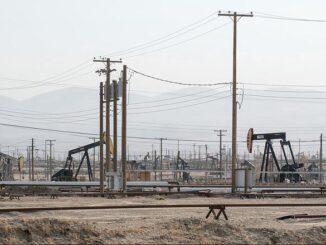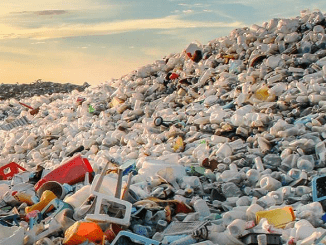Online shopping has become an everyday habit for millions worldwide. With just a few clicks, products travel from warehouses to our doorsteps, saving us time and often money. But behind the convenience lies a challenging question: Can the rapid growth of e-commerce coexist with the urgent need to protect the environment? As the digital marketplace expands, weighing these impacts becomes critical. Examining both the challenges and solutions offers a path toward balancing our desire for convenience with the responsibility to reduce harm.

Understanding the Environmental Footprint of E-Commerce
The environmental impact of online shopping extends far beyond the digital checkout. Each transaction leaves a real-world footprint composed of delivery emissions, packaging waste, and resource consumption. To assess this footprint, it is essential to consider the product life cycle: from production through packaging, shipping, and returns, to eventual disposal. According to a 2018 MIT study, online grocery purchases can emit up to 36% less greenhouse gases compared to traditional shopping, mostly because of fewer car trips. However, advantages vary based on how items are shipped, returned, and disposed of. By looking at these details, we better understand how e-commerce stacks up against brick-and-mortar retail.
Key Environmental Challenges in Online Shopping
Environmental impacts from e-commerce can be traced to several main drivers. Packaging waste remains a major concern. Many online orders arrive wrapped in layers of single-use cardboard and plastic. The World Economic Forum reports that three billion trees are turned into shipping boxes each year, adding pressure on forests. At the same time, only 9% of plastic waste is recycled, with most ending up in landfills or ecosystems.
Transportation emissions also pose a significant problem, particularly in the realm of “last-mile delivery” — the final leg of a product’s journey to the customer. Uneven delivery routes, frequent failed drop-offs, and high return rates mean more vehicles on the road, increasing greenhouse gas emissions. By 2030, the number of delivery vehicles is set to grow by 36%, with expected emissions rising to 6 million tonnes of CO2, according to World Economic Forum projections.
A third challenge is the short lifecycle of many goods sold online, driven by fast fashion and trend-driven technology. The Ellen MacArthur Foundation highlights that the fashion industry alone generates 10% of global carbon emissions and 20% of wastewater. Frequent returns and the disposal of barely used products further amplify these pressures.
Many people mistakenly believe that moving a company's operations to a digital environment reduces the risk of harm to the environment, such as reducing harmful emissions, lowering the carbon footprint, etc. For example, this opinion is held by those who like to speculate about casinos. They argue that many casinos have now moved to a digital environment and thus reduced emissions. This is partly true, but there is a downside to this approach: working online requires powerful servers, and powering them requires electricity, which in itself is harmful to the environment. In addition, server equipment becomes obsolete and also needs to be disposed of somewhere.
However, this does not mean that the transition of casinos to online does not make sense. Emissions are indeed reduced, although they do not disappear completely. In addition, the iGaming market is developing rapidly today. Along with the emergence of new online casinos, new games are also appearing, such as Plinko. Today, this game is very popular and is also available on smartphones. And on information sites like Plinko Apps, you can find all variations of Plinko for Android and iOS.
Consumer Practices: Shaping the Sustainability of E-Commerce
Individual choices play a powerful role in shaping e-commerce’s ecological footprint. Filling a virtual cart with items might feel harmless, but habits around purchase frequency, shipping options, and returns have wide-reaching impacts. For example, selecting single-item rapid delivery increases the number of trips and emissions, while consolidated orders and slower delivery options decrease logistical strain.
Frequent returns, especially for nonessential items or clothing, add to emissions due to reverse logistics. Choosing products that are locally sourced, refurbished, or secondhand can also significantly lower the carbon burden. Practical steps for responsible consumers include:
- Planning orders to consolidate multiple needs at once.
- Opting for slower, grouped delivery windows where possible.
- Reducing unnecessary returns through more informed purchasing.
- Supporting local sellers or platforms with sustainability commitments.
Retailer Innovations and Solutions
E-commerce retailers are experimenting with solutions to minimize their ecological impact. One promising direction is the adoption of renewable or biodegradable packaging materials. According to Statista, the sustainable packaging market is projected to reach $423 billion by 2029, indicating substantial industry investment. Companies increasingly use plant-based, recycled, or minimal packaging to curb waste.
Transport innovation is another area of focus. Retail giants like Amazon invest in electric vans and test drone deliveries to reduce emissions and optimize delivery routes. Efficient logistics technology improves delivery density, meaning more packages per trip and fewer total trips.
Retailers also encourage product longevity by promoting repair services, selling refurbished items, or offering detailed product information to empower environmentally responsible choices. Patagonia, for instance, provides transparency regarding its supply chain, helping customers understand the environmental impact of each purchase.
The Role of Policy and Technology in Shaping Sustainable E-Commerce
Governments and technology developers contribute to greening e-commerce, sometimes shaping the playing field through regulation. Regulations may set standards for packaging recyclability, waste management, or fuel efficiency for delivery fleets. The EU and several U.S. states have introduced rules encouraging sustainable packaging and capping single-use plastics.
Technological advances such as electric delivery vehicles, automated sorting systems, and smart packaging play central roles as well. However, the adoption of such measures often encounters hurdles, such as high initial investment, uneven infrastructure, or slower rollout in less developed markets. As new technologies mature and become more affordable, they are expected to become more widely available.
Weighing the Pros and Cons: When Is E-Commerce Greener?
In some circumstances, online shopping can provide environmental benefits. For shoppers in rural areas, group deliveries often replace multiple individual car trips, potentially lowering emissions per item. Optimized deliveries reduce traffic and fuel consumption in urban centers, provided orders are consolidated and returns are minimized.
On the other hand, frequent impulse purchases, multiple shipments, and high return rates can offset these benefits. Non-recyclable packaging and the popularity of disposable trends may create more environmental strain compared to well-managed traditional retailers. Evaluating specific scenarios — such as location, retailer practices, and consumer habits — helps clarify where e-commerce can provide a greener alternative.
Outlook: Moving Toward Greener Online Shopping
The future of online shopping depends on the combined efforts of consumers, retailers, innovators, and regulators. As new technologies emerge, and as consumers adopt smarter habits, the potential to reduce environmental harm grows. Shared responsibility — from individual decisions at the shopping cart to systemic changes in logistics and manufacturing — is essential for progress.
By reflecting on the choices we make and supporting industry and policy shifts, everyone plays a part in shaping a future where convenience and environmental stewardship can go hand in hand.



